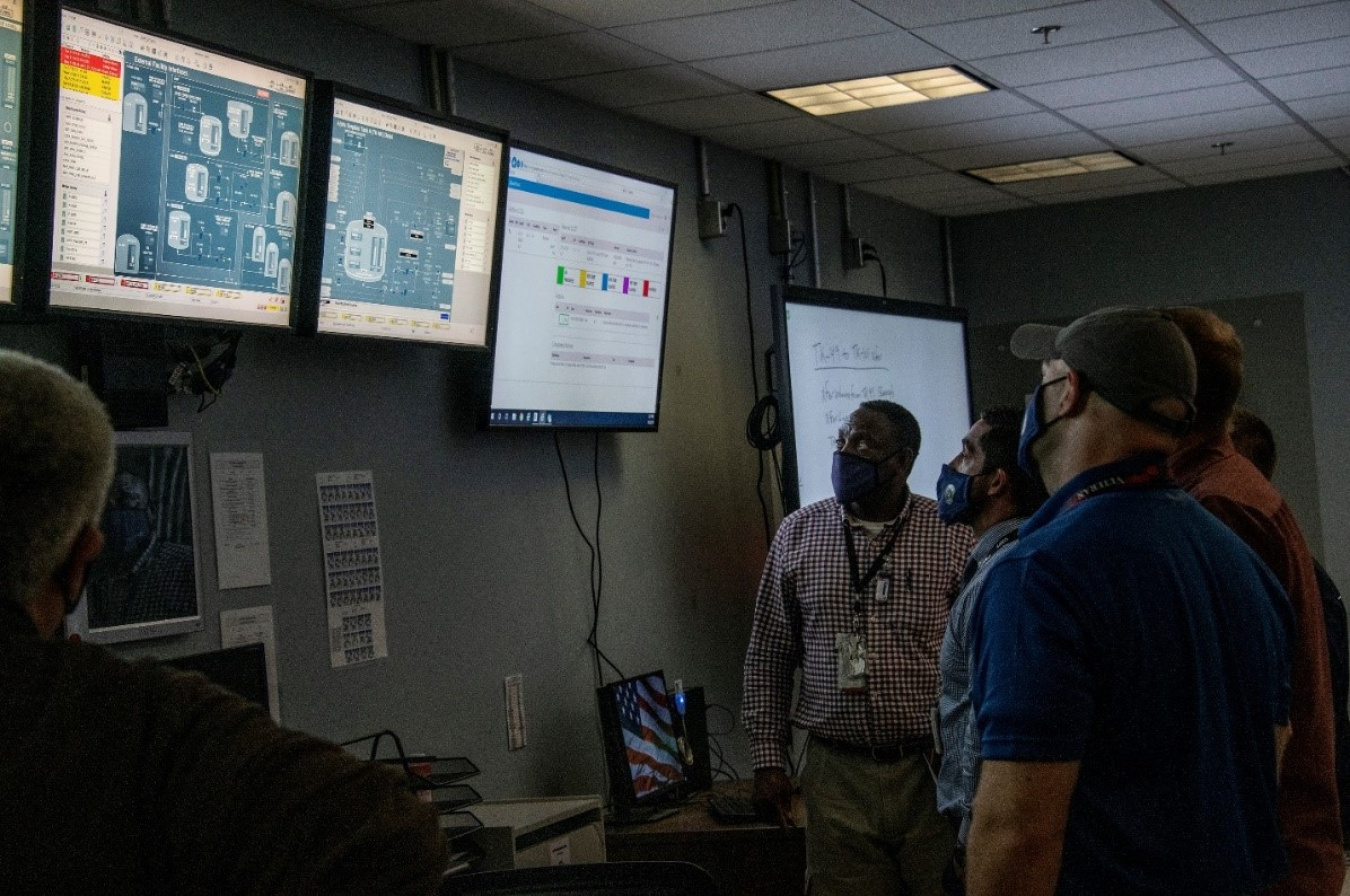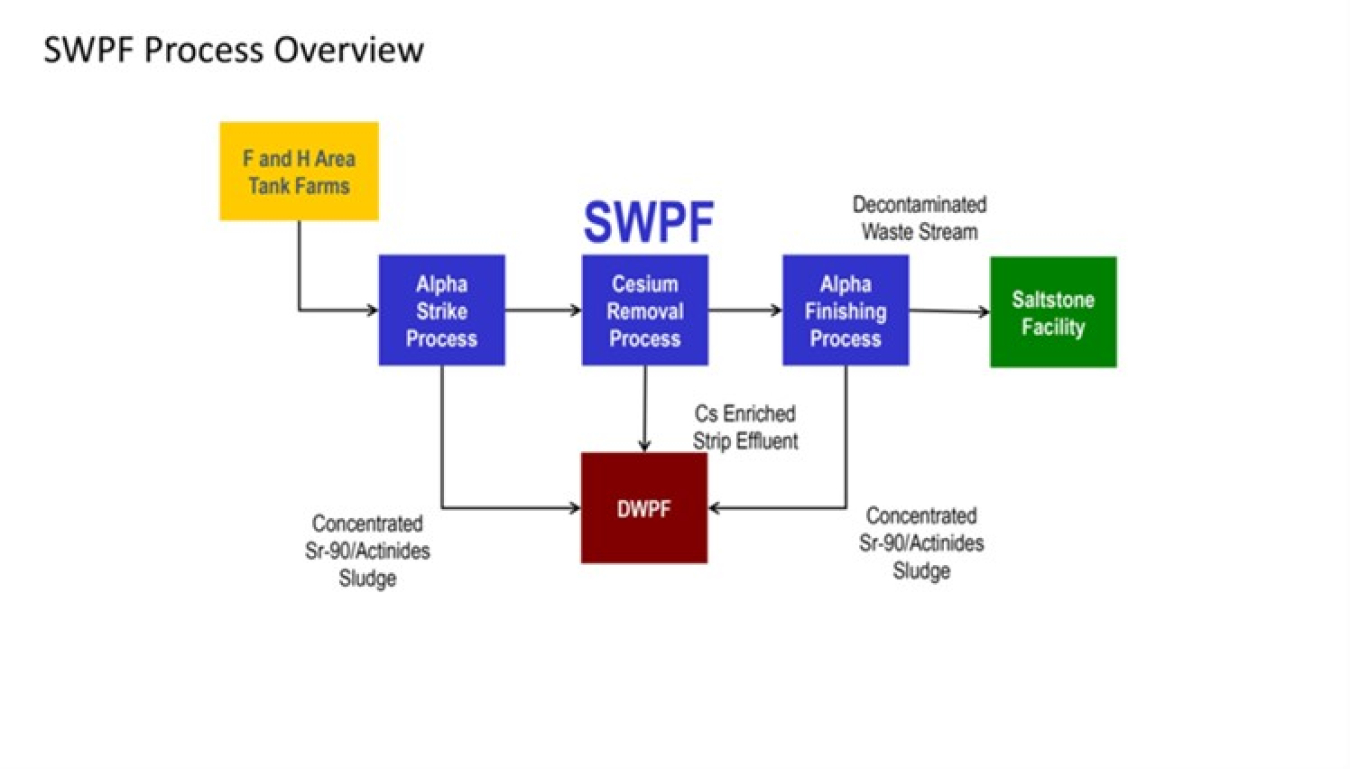The Savannah River Site (SRS) Salt Waste Processing Facility (SWPF), designed to significantly increase the site’s ability to empty and close ...
November 9, 2020Aiken, SC – The Savannah River Site (SRS) Salt Waste Processing Facility (SWPF), designed to significantly increase the site’s ability to empty and close radioactive waste tanks, has processed thousands of gallons of waste in its first month of operation.
The first batch of radioactive waste was transferred to SWPF Oct. 5, beginning “hot” commissioning of the facility. As of Nov. 9, SWPF has received eight transfers totaling nearly 86,000 gallons of waste.
“SWPF begins a new era in processing radioactive material that in the near future will enable DOE to close waste tanks at an unprecedented rate,” said Department of Energy Manager for the Savannah River Operations Office Mike Budney.
The first batch of approximately 4,000 gallons of waste took about two weeks to process as the facility methodically goes through a series of surveillances and sampling to ensure all aspects of the process work as designed.

Employees at the Savannah River Site monitor the first transfer of waste to the Salt Waste Processing Facility, Oct. 5, 2020.
The first three transfers were relatively small and subsequently diluted once received at SWPF. This is a common practice with any type of nuclear facility startup. It allows for operation of the facility with real, albeit diluted, feed to ensure all systems and components perform as expected.
According to Jim Folk, DOE’s Assistant Manager for Waste Disposition, the startup of any nuclear facility is performed in a deliberate manner to ensure it operates as designed. “Our startup of SWPF is similarly being conducted using a conservative and safe approach.”
The next three transfers were larger and less diluted as the facility ramped up its testing expectations. The remainder of the hot commissioning testing will be performed using non-diluted waste as the facility goes through its final operational checkouts.
The process begins by transferring the waste from H Tank Farm to SWPF where it undergoes a two-step cleanup process.
The first step removes strontium and actinides (uranium, plutonium, etc.) from the waste. The second step, known as Caustic Side Solvent Extraction (CSSX), is designed for the removal of radioactive cesium.
After the separation process is completed, the concentrated high-activity waste is sent to the nearby Defense Waste Processing Facility (DWPF). The decontaminated salt solution is mixed with cement-like grout at the nearby Saltstone Production Facility for disposal on site
Transfers of these waste streams out of SWPF have also been completed successfully. Decontaminated salt solution from SWPF has been sent to the Saltstone Production Facility. The actinide-laden sludge solids and the cesium-laden strip effluent radioactive waste streams removed from the salt waste by SWPF, have been sent to the DWPF where the waste will be immobilized in glass and stored in stainless steel canisters on site until a federal repository is established.

A diagram of the Salt Waste Processing Facility process.
Hot commissioning activities have progressed as expected with completion currently scheduled for late December. Parsons Corporation, who designed and built the first-of-a-kind facility, will operate it for one year beginning in January 2021. It is anticipated the facility will process between 4 to 6 million gallons of waste in that year of operations

An aerial view of the Salt Waste Processing Facility at the Savannah River Site.
The SWPF systems and components have largely performed as expected. The only notable issue to date was identified during one of the early transfers, when a pump that sends the salt waste into the CSSX process did not operate properly. The pump has since been replaced.
“Based on results to date, we have every reason to believe hot commissioning will continue as planned and normal operations will begin soon after the new year,” said Folk.
The start-up of the SWPF, the last major piece of the liquid waste system at SRS, represents a leap forward in the Department of Energy’s ability to tackle the largest and one of the most challenging environmental risks – tank waste.
Now that SWPF is operational, it is expected that nearly all of the salt waste inventory at SRS will be processed by 2030.
Media Contacts:
Sonya Goines
U.S. Department of Energy
(803) 646-2788, sonya.goines@srs.gov

